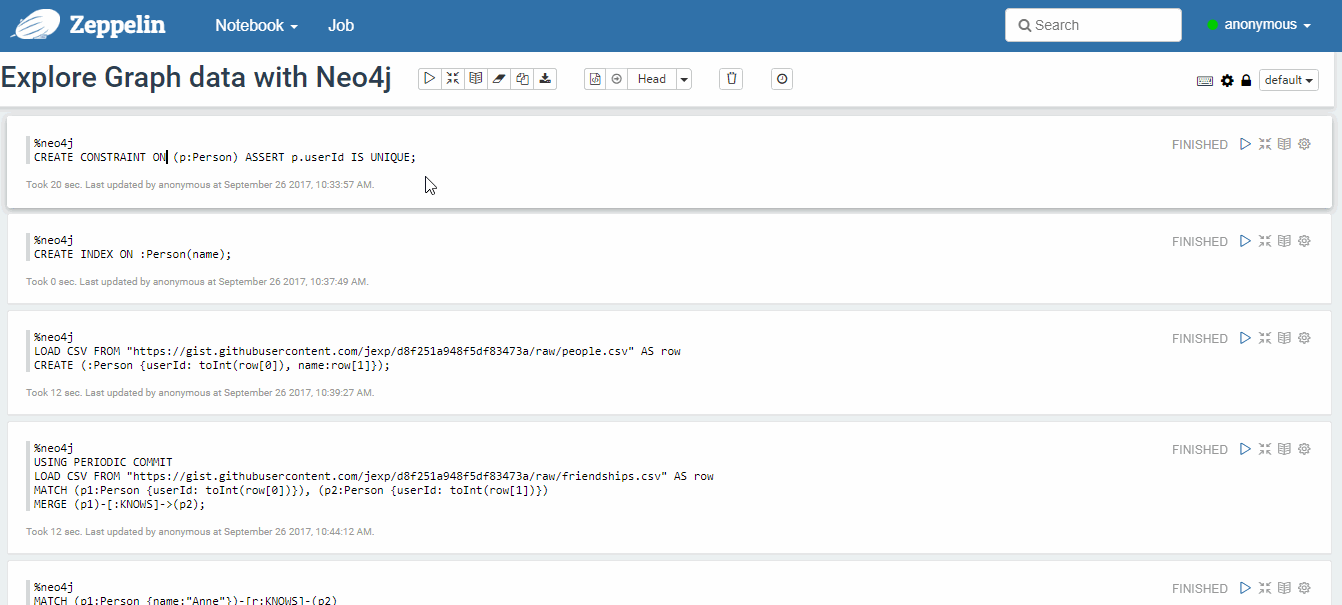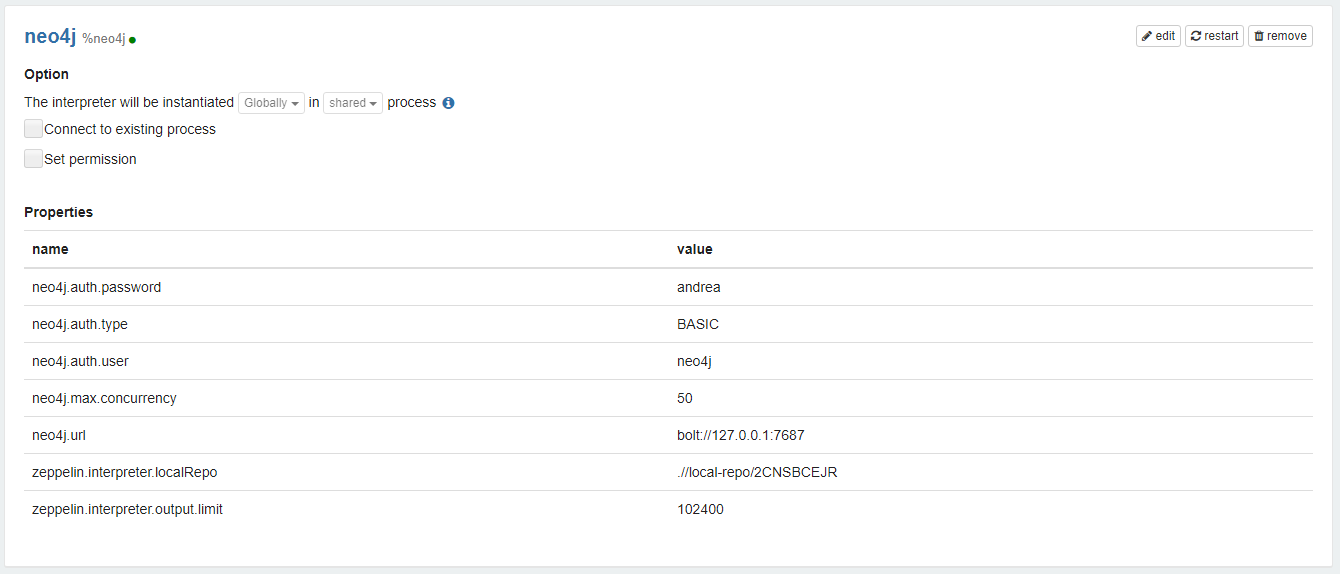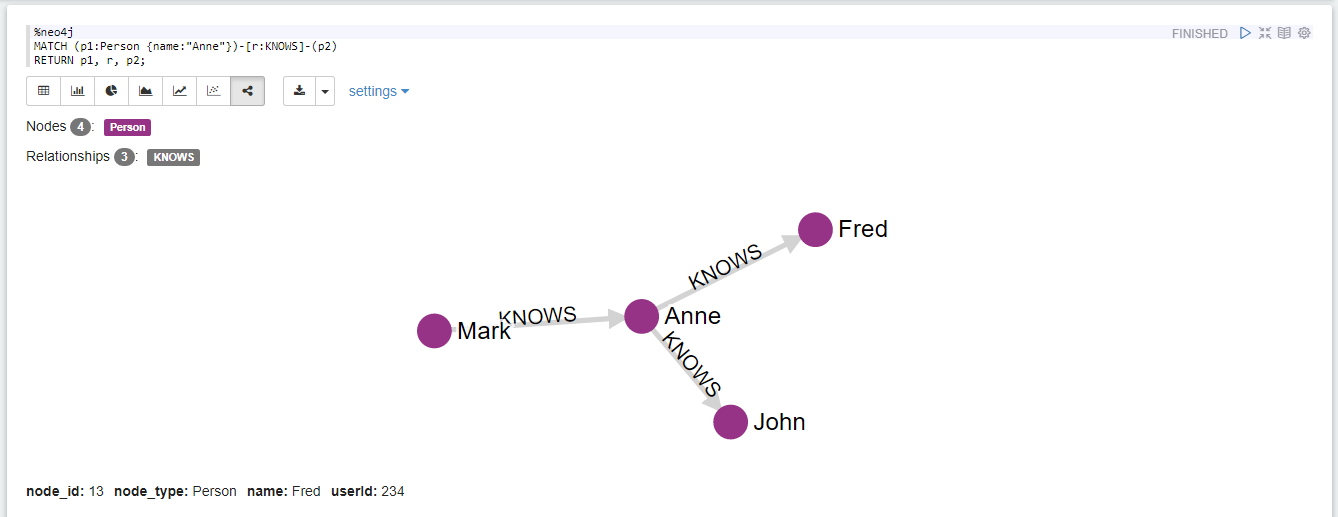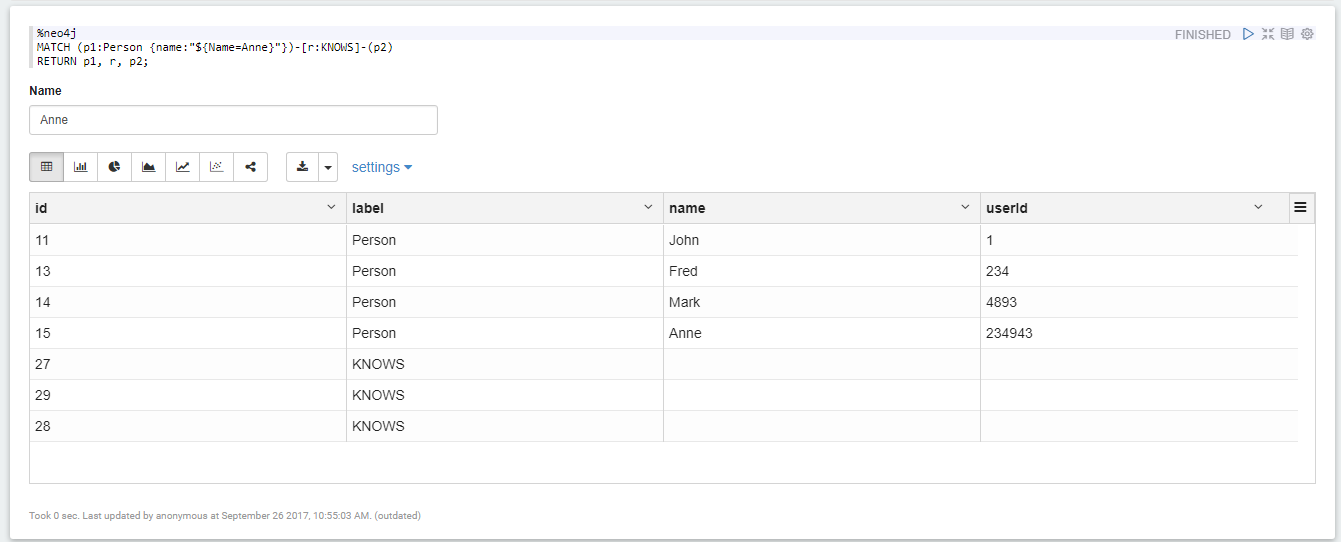Neo4j Interpreter for Apache Zeppelin
Overview
Neo4j is a native graph database, designed to store and process graphs from bottom to top.
Supported Version
The Neo4j Interpreter supports all Neo4j versions since v3 via the official Neo4j Java Driver

Configuration
| Property | Default | Description |
|---|---|---|
| neo4j.url | bolt://localhost:7687 | The Neo4j's BOLT url. |
| neo4j.database | The neo4j target database, if empty use the dafault db. | |
| neo4j.multi.statement | true | Enables the multi statement management, if true it computes multiple queries separated by semicolon. |
| neo4j.auth.type | BASIC | The Neo4j's authentication type (NONE, BASIC). |
| neo4j.auth.user | neo4j | The Neo4j user name. |
| neo4j.auth.password | neo4j | The Neo4j user password. |
| neo4j.max.concurrency | 50 | Max concurrency call from Zeppelin to Neo4j server. |

Enabling the Neo4j Interpreter
In a notebook, to enable the Neo4j interpreter, click the Gear icon and select Neo4j.
Using the Neo4j Interpreter
In a paragraph, use %neo4j to select the Neo4j interpreter and then input the Cypher commands.
For list of Cypher commands please refer to the official Cyper Refcard
%neo4j
//Sample the TrumpWorld dataset
WITH
'https://docs.google.com/spreadsheets/u/1/d/1Z5Vo5pbvxKJ5XpfALZXvCzW26Cl4we3OaN73K9Ae5Ss/export?format=csv&gid=1996904412' AS url
LOAD CSV WITH HEADERS FROM url AS row
RETURN row.`Entity A`, row.`Entity A Type`, row.`Entity B`, row.`Entity B Type`, row.Connection, row.`Source(s)`
LIMIT 10
The Neo4j interpreter leverages the Network display system allowing to visualize the them directly from the paragraph.
Write your Cypher queries and navigate your graph
This query:
%neo4j
MATCH (vp:Person {name:"VLADIMIR PUTIN"}), (dt:Person {name:"DONALD J. TRUMP"})
MATCH path = allShortestPaths( (vp)-[*]-(dt) )
RETURN path
produces the following result_

Apply Zeppelin Dynamic Forms
You can leverage Zeppelin Dynamic Form inside your queries. This query:
%neo4j
MATCH (o:Organization)-[r]-()
RETURN o.name, count(*), collect(distinct type(r)) AS types
ORDER BY count(*) DESC
LIMIT ${Show top=10}
produces the following result:

